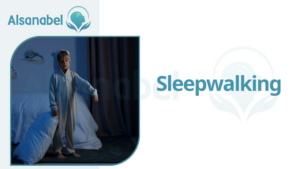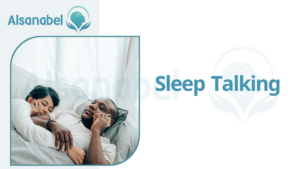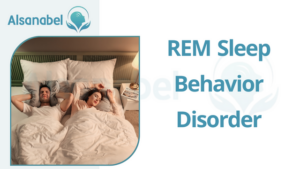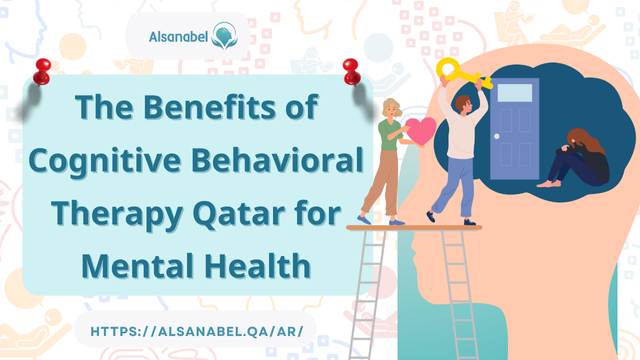Parasomnias in Children and Adults 2024
- Category Parasomnias
Parasomnias in Children and Adults
Parasomnias are a group of sleep disorders that disrupt normal sleep patterns. These disorders can occur in both children and adults, but they are more common in childhood. In fact, parasomnias are often more frequent in children than in adults. Various types of parasomnias can affect both age groups, including sleepwalking, sleep terrors, confusional arousals, and nightmares.
Common symptoms and causes of parasomnias
The symptoms of parasomnias can vary depending on the specific disorder, but some common symptoms include sleep talking, sleepwalking, night sweats, bedwetting, and vivid nightmares. These symptoms can be disruptive and may cause distress or impairment in daily functioning.
The exact causes of parasomnias are not fully understood, but they can be influenced by a combination of genetic, environmental, and psychological factors. In children, parasomnias may be more prevalent due to the immaturity of the central nervous system and the ongoing development of sleep architecture.
Certain factors can trigger or exacerbate parasomnias in both children and adults. These may include sleep deprivation, stress, fever, medications, and substance abuse. It is important for clinicians and caregivers to be aware of these factors to help manage and prevent parasomnias.
Sleepwalking
Sleepwalking, also known as somnambulism, is a type of parasomnia that involves engaging in complex behaviors while asleep. This sleep disorder is characterized by a person getting out of bed and walking around while still in a deep sleep state.

Sleepwalking can range from simple actions, such as sitting up in bed or walking to the bathroom, to more complex behaviors like eating or even driving a car. The person who is sleepwalking is usually unresponsive and has no memory of the event upon awakening.
Sleepwalking episodes typically occur during the first half of the night, during the non-rapid eye movement (NREM) sleep stages, which are deep sleep stages. It is more common in children, but it can also affect adults. In fact, sleepwalking in adults often continues from childhood, but it can also develop later in life.
Causes and triggers of sleepwalking
- In children, sleepwalking may be more prevalent due to the immaturity of the central nervous system and the ongoing development of sleep architecture.
- In adults, sleepwalking may be associated with certain conditions or factors such as sleep deprivation, stress, fever, medications, and substance abuse.
Certain triggers can also lead to sleepwalking episodes. These triggers vary from person to person but can include sleep deprivation, irregular sleep schedules, physical or emotional stress, fever or illness, certain medications, and even alcohol consumption.
To effectively manage sleepwalking, it is recommended to consult with a healthcare professional, such as a sleep specialist or pediatrician, who can provide appropriate guidance and intervention and Psychiatrists in Qatar. Treatment options may include behavioral strategies, such as improving sleep hygiene and creating a calm sleep environment, as well as medication in some cases.
Night Terrors
Night terrors, also known as sleep terrors, are a type of parasomnia that can occur in both children and adults. This sleep disorder is characterized by sudden episodes of apparent terror and intense fear during sleep. Unlike nightmares, where the person can recall the frightening dream upon awakening, individuals experiencing night terrors often have no recollection of the episode.
Night terrors typically occur in the first few hours of sleep, during the non-rapid eye movement (NREM) sleep stages. They are more common in children, especially between the ages of 3 and 8, but can also affect adults.
In children, night terrors may stem from factors such as an immature central nervous system or a disrupted sleep-wake cycle. In adults, night terrors may be associated with sleep deprivation, stress, alcohol or drug use, certain medications, and other medical conditions or Psychiatric in Qatar.
Differentiating night terrors from nightmares
Night terrors and nightmares may seem similar, but there are distinct differences between the two.
- Nightmares are frightening dreams that occur during the rapid eye movement (REM) sleep stage, and the person experiencing them is usually able to recall the dream upon awakening.
- Night terrors involve sudden, intense feelings of fear and distress, often accompanied by automatic behaviors like screaming, crying, or thrashing. The individual experiencing a night terror is usually unresponsive to comforting and may have no memory of the episode the next day.
It is important to note that night terrors can be distressing for both the individual experiencing them and their family members. Parents or caregivers who witness a child having a night terror may find it concerning, but it is essential to remember that the child is not fully awake and does not remember the episode.
If night terrors persist or significantly disrupt sleep and daily functioning, it is advisable to seek medical attention. A Psychiatric in Qatar, such as a sleep specialist, can evaluate the individual’s symptoms and provide appropriate interventions. Treatment approaches may include addressing any underlying causes, improving sleep hygiene, managing stress or anxiety, and, in some cases, medication may be prescribed.
Bedwetting (Nocturnal Enuresis)
Bedwetting, also known as nocturnal enuresis, is a common condition that affects both children and adults. It is characterized by the accidental release of urine during sleep. Understanding the causes and available treatment options is crucial in managing this condition.
There can be various underlying causes of bedwetting. In children, it is often a result of an immature central nervous system, a disrupted sleep-wake cycle, or genetic factors. For adults, bedwetting may be associated with factors such as stress, anxiety, alcohol or drug use, certain medications, or medical conditions like diabetes or urinary tract infections.
Treatment options for bedwetting
Fortunately, there are several treatment options for bedwetting, Behavioral interventions, such as implementing a routine toileting schedule, limiting fluid intake before bedtime, and using bedwetting alarms, can be effective in breaking the bedwetting cycle.
In some cases, medication might be prescribed to help manage bedwetting by Psychiatrists in Qatar. These medications work by reducing bladder contractions or increasing bladder capacity.
Impact of bedwetting on children and adults
Bedwetting can have a significant impact on the social and emotional well-being of both children and adults. It can lead to feelings of embarrassment, shame, and low self-esteem.
- Children may avoid sleepovers or other social activities, fearing ridicule or judgment from their peers.
- Adults may experience similar anxieties, impacting their relationships and overall quality of life.
Sleep Talking
Sleep talking, also known as somniloquy, is a parasomnia characterized by talking during sleep. It is an abnormal behavior that can occur during either rapid eye movement (REM) or non-REM sleep. Sleep talking is often associated with other parasomnias, such as sleepwalking and sleep terrors, and its prevalence remains stable from childhood through adulthood.

According to research, sleep talking is more common in children than adults, but it has been recorded across different age groups. It is usually harmless and temporary, lasting for a few seconds to a couple of minutes. Sleep talkers may not be aware of their actions and their speech during sleep can range from simple sounds to full sentences.
Factors Contributing to Sleep Talking
The exact causes of sleep talking are not fully understood, but several factors have been identified that contribute to its occurrence. These factors include:
- Genetics: Sleep talking can be hereditary, meaning it can run in families. Certain genetic factors may predispose individuals to sleep talking.
- Sleep deprivation: Lack of sleep or poor sleep quality can increase the likelihood of sleep talking. Sleep disorders, such as insomnia or sleep apnea, can also contribute to this parasomnia.
- Stress and anxiety: Emotional stress and anxiety can trigger sleep talking episodes. People who experience high levels of stress or anxiety are more prone to sleep talking.
- Fever or illness: Sleep talking can be more prevalent during times of illness or fever. The body’s physiological response to infection or elevated body temperature may play a role in triggering sleep talking episodes.
While sleep talking is generally harmless, it can be disruptive to the sleep of the sleeper or their bed partner. If sleep talking becomes frequent, loud, or accompanied by other disruptive behaviors, it is advisable to consult a healthcare professional or Psychiatrist in Qatar for further evaluation.
Sleep Eating (Nocturnal Sleep-Related Eating Disorder)
Sleep-related eating disorder (SRED) is a type of parasomnia characterized by abnormal eating behaviors during sleep. Individuals with SRED typically consume food during nocturnal sleep episodes, often with no recollection of doing so upon waking. This disorder can occur in both children and adults, and it is more common in females. SRED is often associated with other sleep disorders, such as sleepwalking and restless leg syndrome.
The exact cause of SRED is not fully understood, but several factors have been identified that may contribute to its development. These include sleep deprivation, stress, certain medications such as sedatives or hypnotics, and underlying psychiatric conditions such as depression or anxiety disorders. Individuals with a history of eating disorders, such as bulimia nervosa or binge eating disorder, may also be at a higher risk of developing SRED.
Complications and management strategies
SRED can have significant physical and psychological consequences for individuals affected by it. These can include weight gain, nutritional deficiencies, gastrointestinal issues, and sleep disturbances. It can also lead to embarrassment, shame, and social isolation, as individuals may feel stigmatized by their eating behaviors.
Effective management of SRED involves a multidisciplinary approach. Treatment options may include a combination of behavioral therapy, medication, and addressing any underlying sleep disorders. Cognitive-behavioral therapy (CBT) has shown promising results in helping individuals gain control over their nighttime eating behaviors and reducing episodes of SRED.
In some cases, medications such as selective serotonin reuptake inhibitors (SSRIs) or anti-seizure medications may be prescribed to help control symptoms. It is important for healthcare professionals and Psychiatrists in Qatar to evaluate and address any underlying psychiatric conditions that may be contributing to SRED.
Additionally, implementing sleep hygiene practices, such as maintaining a regular sleep schedule, creating a calming bedtime routine, and ensuring a comfortable sleep environment, may also be beneficial in managing SRED.
Sleep Paralysis
Sleep paralysis is a parasomnia characterized by a temporary inability to move or speak while falling asleep or waking up. It is often accompanied by a feeling of pressure on the chest and hallucinations.
This condition is linked to the rapid eye movement (REM) stage of sleep, which is when most dreaming occurs. During REM sleep, the brain sends a signal to temporarily paralyze the muscles to prevent acting out dreams. However, in sleep paralysis, this paralysis persists for a brief period after waking up.
Sleep paralysis can be a distressing experience, causing anxiety and fear in those who experience it. It is more common in individuals with certain risk factors, such as a family history of sleep paralysis or other sleep disorders, irregular sleep patterns, poor sleep quality, and high-stress levels.
Relief Techniques for Sleep Paralysis Episodes
While there isn’t a specific cure for sleep paralysis, there are techniques that can help manage and alleviate the episodes. Creating a consistent sleep schedule, practicing good sleep hygiene, and reducing stress levels can improve overall sleep quality and decrease the likelihood of experiencing sleep paralysis.
During an episode of sleep paralysis, it can be helpful to remain calm and focused on trying to move small muscles, such as wiggling the toes or fingers. Concentrating on slow and controlled deep breathing can also help relax the body and potentially release the paralysis.
Seeking professional help from sleep specialists, Psychiatrist in Qatar or therapists experienced in sleep disorders can provide further guidance and support in managing sleep paralysis. In some cases, medication or therapy may be recommended to address underlying sleep disturbances or psychological factors contributing to the condition.
REM Sleep Behavior Disorder
In REM sleep behavior disorder, individuals physically and vocally act out their dreams during REM sleep. This can involve vivid and often unpleasant or violent dreams.

Symptoms of RBD may include mild muscle twitches or limb movements, talking, shouting or screaming (sometimes using vulgar language), kicking, punching or grabbing the air or their bed partner, and even jumping or falling out of bed.
Diagnosis of REM sleep behavior disorder
If someone suspects they or their bed partner may have REM sleep behavior disorder, it is important to consult with a healthcare professional or sleep specialist. A comprehensive evaluation will be conducted to determine the presence of the disorder and its underlying causes.
Diagnosis of RBD often involves a thorough medical history assessment, physical examination, and sleep study (polysomnography) to monitor brain waves, muscle activity, eye movements, and other physiological parameters during sleep. This diagnostic procedure helps differentiate RBD from other sleep disorders and identifies potential triggers or contributing factors.
Treatment options for REM sleep behavior disorder
Treatment for REM sleep behavior disorder typically involves a combination of lifestyle changes, environmental modifications, and medication.
Healthcare professionals may recommend maintaining a regular sleep schedule, improving sleep hygiene practices, implementing safety measures, such as padding sharp edges or moving objects that may pose a risk during nighttime movements, and reducing stress levels. In some cases, medications that suppress muscle activity during sleep, such as clonazepam or melatonin, may be prescribed to alleviate symptoms and prevent injury.
It is crucial for individuals with REM sleep behavior disorder and their bed partners to address the potential risks associated with acting out dreams during sleep. Seeking professional help like Psychologist in Qatar and adhering to the recommended treatment plan can contribute to a safer and more restful sleep experience for both parties involved.
Importance of identifying and addressing parasomnias
Parasomnias, including REM sleep behavior disorder, are sleep disorders characterized by abnormal behaviors during sleep. While more commonly observed in children, they can occur in adults as well. It is crucial to identify and address these parasomnias as they can significantly impact an individual’s sleep quality and overall well-being. Recognizing the symptoms and seeking professional help like Psychiatrist in Qatar is essential in managing these disorders effectively.
Tips for managing and improving sleep quality
- Maintain a regular sleep schedule: Establishing a consistent sleep routine helps regulate the body’s internal clock and promotes better sleep quality. Going to bed and waking up at the same time every day can enhance the overall sleep-wake cycle.
- Create a sleep-friendly environment: Ensure that the bedroom is quiet, dark, and comfortable. Use earplugs, eye masks, or white noise machines to block out any disturbances that may disrupt sleep. Keeping the room at a cool temperature and investing in a comfortable mattress and pillows can also contribute to better sleep.
- Practice good sleep hygiene: Adopting healthy sleep habits can improve sleep quality. Avoid consuming caffeine or stimulating substances before bedtime and limit daytime napping. Establish a relaxing pre-sleep routine, such as reading a book or taking a warm bath, to signal the body to wind down for sleep.
- Manage stress levels: Stress and anxiety can greatly affect sleep quality. Engage in stress-reducing activities, such as practicing mindfulness or engaging in regular exercise. If stress continues to interfere with sleep, consider seeking professional help, such as therapy or counseling.
- Create a safe sleeping environment: For individuals with parasomnias, it is crucial to ensure safety during sleep. Remove any objects that may pose a risk during nighttime movements and pad sharp edges to prevent injury. If necessary, consult with a healthcare professional for additional safety measures.
By implementing these tips and seeking appropriate medical guidance, individuals can effectively manage and improve their sleep quality, reducing the impact of parasomnias on their day-to-day life. Remember, a good night’s sleep is essential for overall health and well-being.









